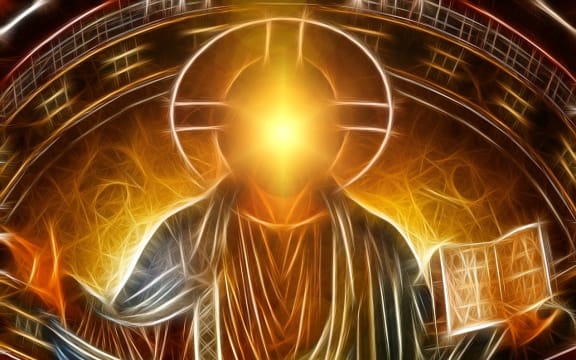
Image depicting the Ascension of Jesus Photo: PhotosForClass
Performed by Anne Loeser (baroque violin), Jane Young (baroque cello), Bethany Angus (harpsichord)
The second Glorious Mystery is The Ascension. St Luke’s Gospel, and the Acts of the Apostles, tell us that forty days after his resurrection, Jesus took his eleven apostles to Bethany near the Mount of Olives and blessed them there. Then before the dumbfounded gaze of the apostles, Jesus ascended into the sky and disappeared into a cloud. Two angels appeared and told the apostles that the same Jesus whose ascension into heaven they had just witnessed, would one day return by the same route. So, the crucial importance of the Ascension in Christian belief is that it establishes the possibility of Jesus' return to earth in the future.
Biber's take on it is a Sonata in C major with a scordatura, or mistuning, of C-E-G-C, a simple root-position C major chord, and the inner strings are no longer crossed over. It is the only one of the Mystery Sonatas to be tuned to a root-position chord. And the bottom string is painfully tight from the violin’s point of view, wrenched up a fourth to C. Biber starts with a short martial Intrada rather devoid of melody, that takes us into an Aria Tubicinum or Trumpet Tune. Here the violin brilliantly imitates the angels’ trumpets fanfaring Christ's ascension into heaven. This is all in Biber's imagination, of course, as there is actually no mention of trumpets or fanfares associated with The Ascension anywhere in the Bible. After the brassy shock of the ascension through the clouds, an Allamanda takes us to the calm uplands of heaven. Biber then finishes with a stately Courente and Double.
Programme note by Gregory Hill.
Producer/engineer: David McCaw

